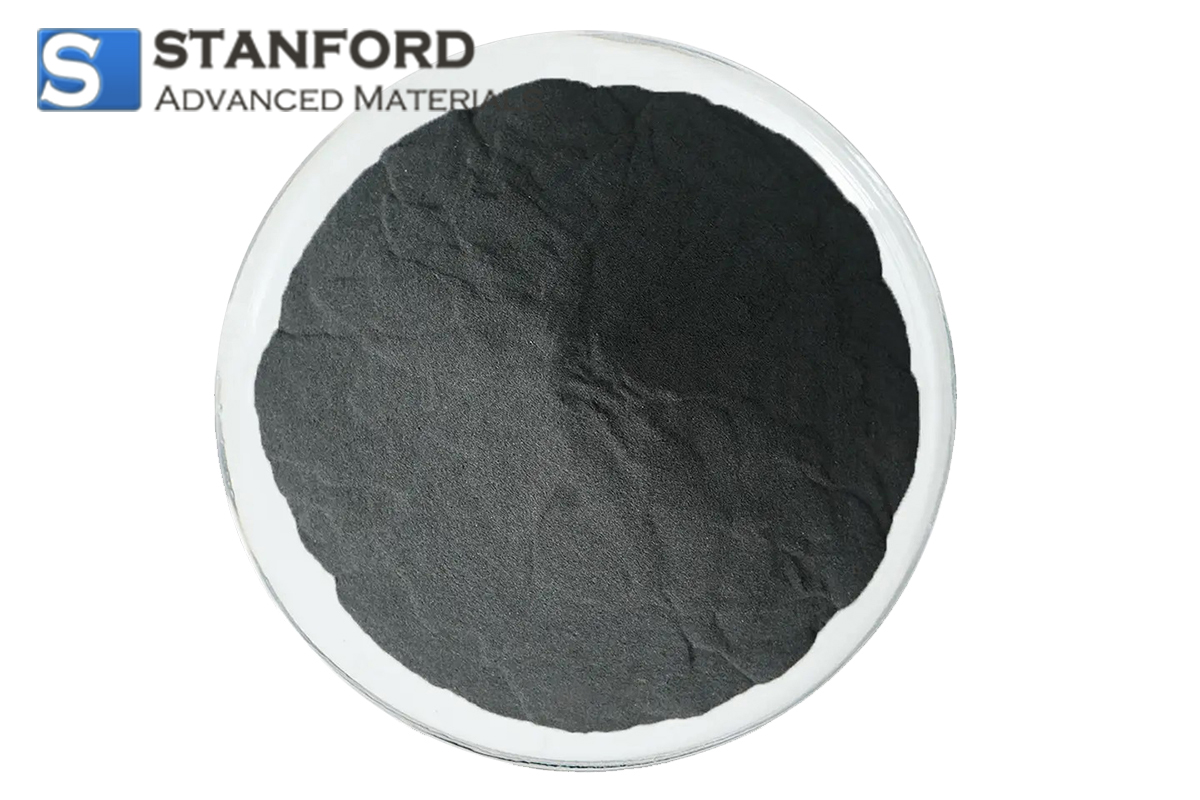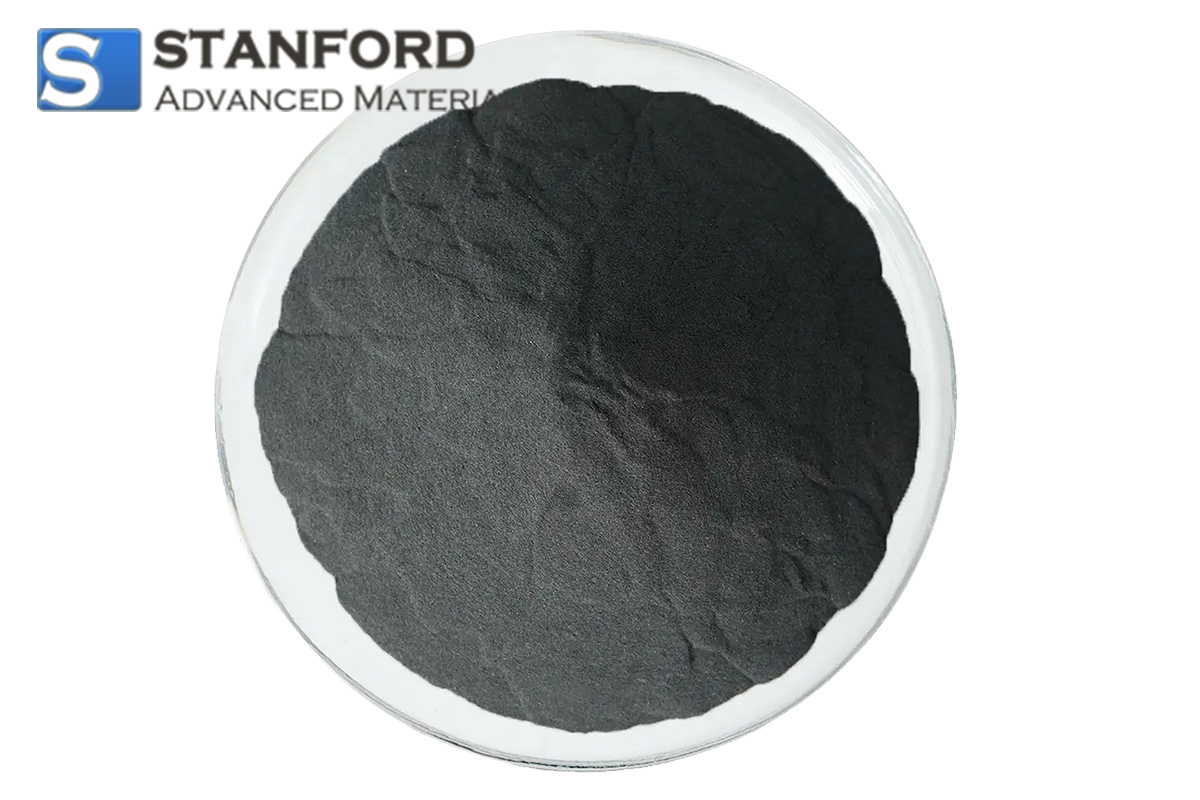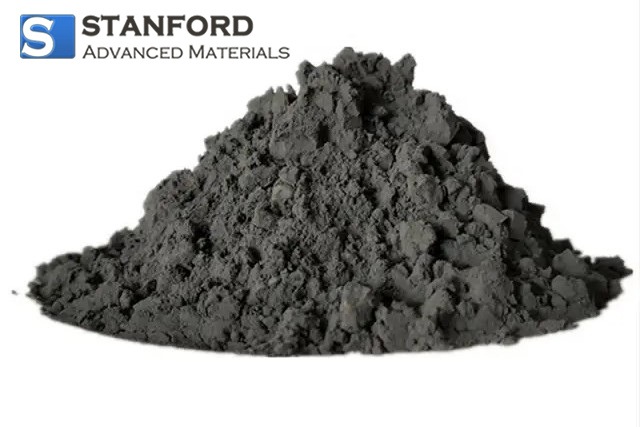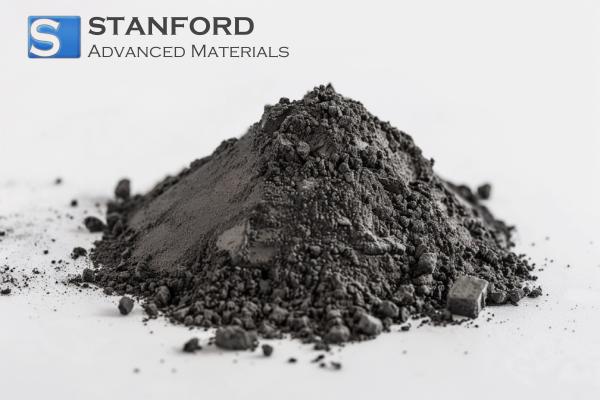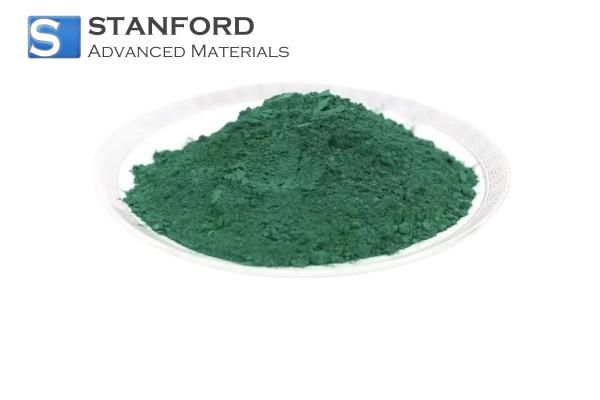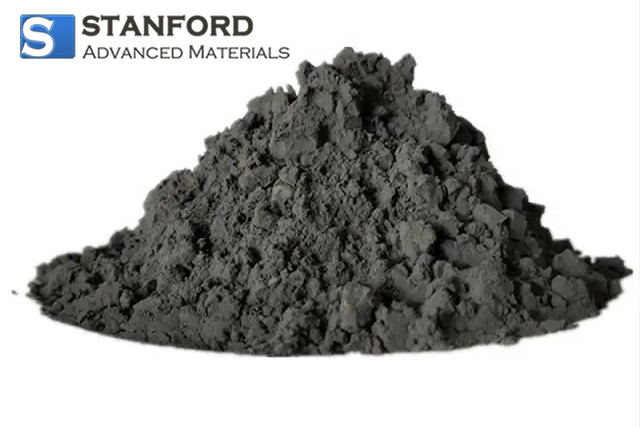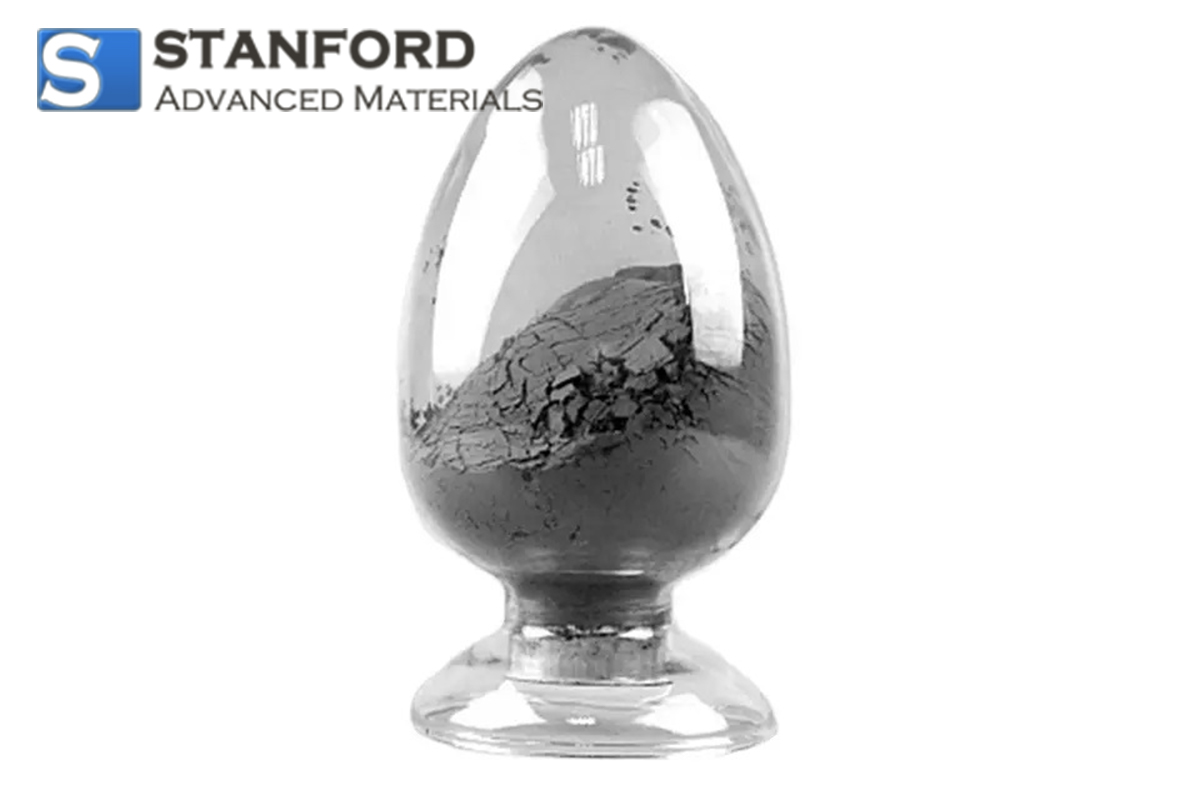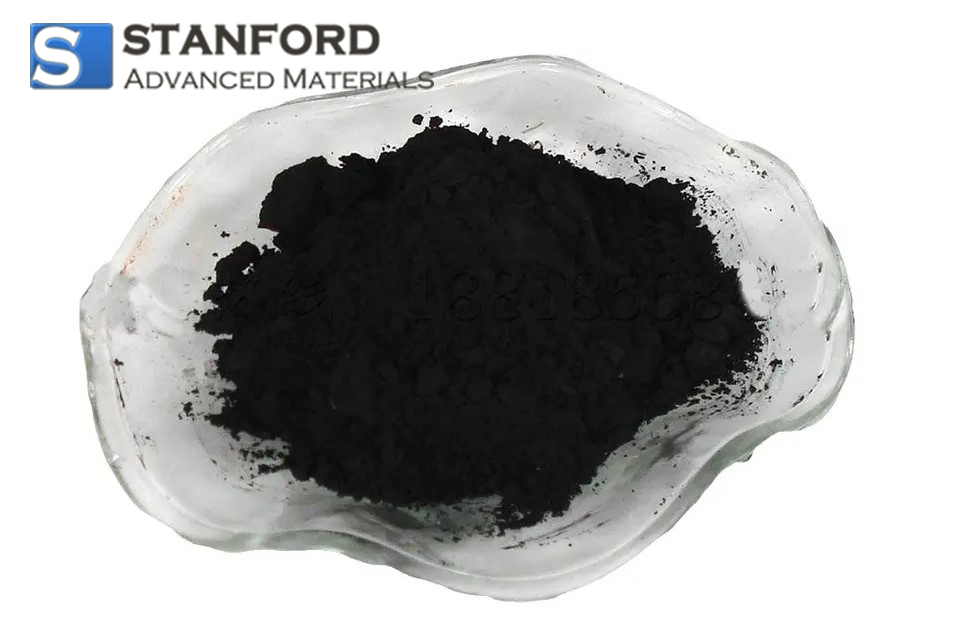SECTION 1. IDENTIFICATION
Product Name: Chromium Carbide Cr7C3
CAS #: 12075-40-0
Relevant identified uses of the substance: Scientific research and development
Supplier details:
Stanford Advanced Materials
E-mail: sales@samaterials.com
Tel: (949) 407-8904
Address: 23661 Birtcher Dr., Lake Forest, CA 92630 U.S.A.
SECTION 2. HAZARDS IDENTIFICATION
Physical hazards Not classified.
Health hazards Sensitization, skin Category 1
Carcinogenicity Category 1
Hazardous to the aquatic environment, acute Category 1
hazard
Environmental hazards
Hazardous to the aquatic environment, Category 1
long-term hazard
OSHA defined hazards Not classified
Label elements
Signal word Danger
Hazard statement May cause an allergic skin reaction. May cause cancer. Very toxic to aquatic life.
Very toxic to
aquatic life with long lasting effects.
Precautionary statement
Prevention Obtain special instructions before use. Do not handle until all safety precautions have beenread
and understood. Avoid breathing dust/fume/gas/mist/vapors/spray. Contaminated work clothing
must not be allowed out of the workplace. Avoid release to the environment. Wear protective
gloves/protective clothing/eye protection/face protection.
Response If on skin: Wash with plenty of water. If exposed or concerned: Get medical
advice/attention. If
skin irritation or rash occurs: Get medical advice/attention. Wash contaminated clothing before
reuse. Collect spillage.
Storage Store locked up.
Disposal Dispose of contents/container in accordance with local/regional/national/international
regulations.
Hazard(s) not otherwise
classified (HNOC)
None known.
Supplemental information None.
SECTION 3. COMPOSITION/INFORMATION ON INGREDIENTS
Substances
Chemical name Common name and synonyms CAS number %
Chromium Carbide 12075-40-0 100
*Designates that a specific chemical identity and/or percentage of composition has been withheld as a
trade secret.
SECTION 4. FIRST AID MEASURES
Inhalation Move to fresh air. Call a physician if symptoms develop or persist.
Remove contaminated clothing immediately and wash skin with soap and water. In case of
eczema or other skin disorders: Seek medical attention and take along these instructions.
Skin contact
Eye contact Rinse with water. Get medical attention if irritation develops and persists.
Ingestion Rinse mouth. Get medical attention if symptoms occur.
Most important May cause an allergic skin reaction. Dermatitis. Rash.
symptoms/effects, acute and
delayed
Provide general supportive measures and treat symptomatically. Keep victim under observation.
Symptoms may be delayed.
Indication of immediate medical
attention and special treatment
needed
IF exposed or concerned: Get medical advice/attention. Ensure that medical personnel are aware
of the material(s) involved, and take precautions to protect themselves. Wash contaminated
clothing before reuse.
SECTION 5. FIREFIGHTING MEASURES
Suitable extinguishing media Water fog. Foam. Dry chemical powder. Carbon dioxide (CO2).
Unsuitable extinguishing media Do not use water jet as an extinguisher, as this will spread the fire.
Specific hazards arising from During fire, gases hazardous to health may be formed.
the chemicalSpecial protective equipment Self-contained breathing apparatus and full protective clothing must be
worn in case of fire.
and precautions for firefighters
Fire fighting Use water spray to cool unopened containers.
equipment/instructions
Specific methods Use standard firefighting procedures and consider the hazards of other involved
materials.
General fire hazards No unusual fire or explosion hazards noted.
SECTION 6. ACCIDENTAL RELEASE MEASURES
Personal precautions, protective
equipment and emergency
procedures
Keep unnecessary personnel away. Keep people away from and upwind of spill/leak. Wear
appropriate protective equipment and clothing during clean-up. Do not touch damaged containers
or spilled material unless wearing appropriate protective clothing. Ensure adequate ventilation.
Local authorities should be advised if significant spillages cannot be contained. For personal
protection, see section 8 of the SDS.
Methods and materials for
containment and cleaning up
Stop the flow of material, if this is without risk. Prevent product from entering drains. Following
product recovery, flush area with water. For waste disposal, see section 13 of the SDS.
Environmental precautions
Avoid release to the environment. Prevent further leakage or spillage if safe to do so. Avoid
discharge into drains, water courses or onto the ground. Inform appropriate managerial or
supervisory personnel of all environmental releases.
SECTION 7. HANDLING AND STORAGE
Precautions for safe handling
Obtain special instructions before use. Do not handle until all safety precautions have been read
and understood. Provide adequate ventilation. Avoid breathing dust/fume/gas/mist/vapors/spray.
Avoid contact with eyes, skin, and clothing. Avoid prolonged exposure. Should be handled in
closed systems, if possible. Wear appropriate personal protective equipment. Avoid release to the
environment. Observe good industrial hygiene practices.
Conditions for safe storage,
including any incompatibilities
Store locked up. Store in original tightly closed container. Store away from incompatible materials
(see Section 10 of the SDS).
SECTION 8. EXPOSURE CONTROLS/PERSONAL PROTECTION
Occupational exposure limits
US. OSHA Table Z-2 (29 CFR 1910.1000)
Material Type Value
Chromium Carbide (CAS Ceiling 0.1 mg/m3
12075-40-0)
Biological limit values
ACGIH Biological Exposure IndicesMaterial Value Determinant Specimen Sampling Time
Chromium Carbide (CAS 25 μg/l Total chromium Urine *
12075-40-0)
10 μg/l Total chromium Urine *
* - For sampling details, please see the source document.
Control parameters Follow standard monitoring procedures.
Individual protection measures, such as personal protective equipment
Eye/face protection If contact is likely, safety glasses with side shields are recommended.
Skin protection
Wear appropriate chemical resistant gloves. Suitable gloves can be recommended by the glove
supplier.
Hand protection
Other Wear appropriate chemical resistant clothing. Use of an impervious apron is recommended.
Respiratory protection In case of insufficient ventilation, wear suitable respiratory equipment.
Thermal hazards Wear appropriate thermal protective clothing, when necessary.
General hygiene considerations
Always observe good personal hygiene measures, such as washing after handling the material
and before eating, drinking, and/or smoking. Routinely wash work clothing and protective
equipment to remove contaminants. Contaminated work clothing should not be allowed out of the
workplace.
SECTION 9. PHYSICAL AND CHEMICAL PROPERTIES
Appearance
Physical state Solid.
Form Solid. Powder
Color Not available.
Odor N/A
Odor threshold Not available.
pH Not available.
Melting point/freezing point Not available.
Initial boiling point and boiling
range
N/A
Flash point Not available.
Evaporation rate Not available.
Flammability (solid, gas) Not available.
Upper/lower flammability or explosive limits
Flammability limit - lower
(%)
Not available.
Flammability limit - upper
(%)
Not available
Explosive limit - lower (%) Not available.
Explosive limit - upper (%) Not available.
Vapor pressure Not available.
Vapor density Not available.
Relative density Not available.
Solubility(ies)
Solubility (water) Not available.
Partition coefficient
(n-octanol/water)Not available.
Auto-ignition temperature N/A
Decomposition temperature Not available.
Viscosity Not available.
Other information
Explosive properties Not explosive.
Molecular formula C3Cr7
Oxidizing properties Not oxidizing
SECTION 10. STABILITY AND REACTIVITY
Reactivity The product is stable and non-reactive under normal conditions of use, storage and
transport.
Chemical stability Material is stable under normal conditions.
Possibility of hazardous No dangerous reaction known under conditions of normal use.
reactions
Conditions to avoid Contact with incompatible materials.
Incompatible materials Strong oxidizing agents.
Hazardous decomposition No hazardous decomposition products are known.
SECTION 11. TOXICOLOGICAL INFORMATION
Information on likely routes of exposure
Inhalation Prolonged inhalation may be harmful.
Skin contact May cause an allergic skin reaction.
Eye contact Direct contact with eyes may cause temporary irritation.
Ingestion Expected to be a low ingestion hazard.
Symptoms related to the
physical, chemical and
toxicological characteristics
May cause an allergic skin reaction. Dermatitis. Rash.
Information on toxicological effects
Acute toxicity May cause an allergic skin reaction.
Skin corrosion/irritation Prolonged skin contact may cause temporary irritation.
Serious eye damage/eye Direct contact with eyes may cause temporary irritation.
irritation
Respiratory or skin sensitization
Respiratory sensitization Not a respiratory sensitizer.
Skin sensitization May cause an allergic skin reaction.
No data available to indicate product or any components present at greater than 0.1% are
mutagenic or genotoxic.
Germ cell mutagenicity
Carcinogenicity May cause cancer.
IARC Monographs. Overall Evaluation of Carcinogenicity
Chromium Carbide (CAS 12075-40-0) 3 Not classifiable as to carcinogenicity to humans.
US. OSHA Specifically Regulated Substances (29 CFR 1910.1001-1050)
Not listed.
Reproductive toxicity This product is not expected to cause reproductive or developmental effects.
Specific target organ toxicity -
single exposure
Not classified.Specific target organ toxicity -
repeated exposure
Not classified.
Aspiration hazard Not an aspiration hazard.
Chronic effects Prolonged inhalation may be harmful.
SECTION 12. ECOLOGICAL INFORMATION
Ecotoxicity Very toxic to aquatic life with long lasting effects.
Persistence and degradability No data is available on the degradability of this product.
Bioaccumulative potential No data available.
Mobility in soil No data available.
Other adverse effects No other adverse environmental effects (e.g. ozone depletion, photochemical
ozone creation
potential, endocrine disruption, global warming potential) are expected from this component.
SECTION 13. DISPOSAL CONSIDERATIONS
Disposal instructions
Collect and reclaim or dispose in sealed containers at licensed waste disposal site. Do not allow
this material to drain into sewers/water supplies. Do not contaminate ponds, waterways or ditches
with chemical or used container. Dispose of contents/container in accordance with
local/regional/national/international regulations.
Local disposal regulations
Dispose in accordance with all applicable regulations
Hazardous waste code
The waste code should be assigned in discussion between the user, the producer and the waste
disposal company.
Waste from residues / unused
products
Dispose of in accordance with local regulations. Empty containers or liners may retain some
product residues. This material and its container must be disposed of in a safe manner (see:
Disposal instructions).
Contaminated packaging
Since emptied containers may retain product residue, follow label warnings even after container is
emptied. Empty containers should be taken to an approved waste handling site for recycling or
disposal.
SECTION 14. TRANSPORT INFORMATION
DOT
Not regulated as dangerous goods.
IATA
Not regulated as dangerous goods.
IMDG
Not regulated as dangerous goods.
SECTION 15. REGULATORY INFORMATION
US federal regulations
This product is a "Hazardous Chemical" as defined by the OSHA Hazard Communication
Standard, 29 CFR 1910.1200.
TSCA Section 12(b) Export Notification (40 CFR 707, Subpt. D)
Not regulated.
CERCLA Hazardous Substance List (40 CFR 302.4)
Not listed.
US. OSHA Specifically Regulated Substances (29 CFR 1910.1001-1050)
Not listed.
Superfund Amendments and Reauthorization Act of 1986 (SARA)
Immediate Hazard - Yes
Delayed Hazard - Yes
Fire Hazard - No
Pressure Hazard - No
Reactivity Hazard - No
Hazard categories
SARA 302 Extremely hazardous substance
Not listed.
SARA 311/312 Hazardous Yes
chemical
SARA 313 (TRI reporting)
Chemical name CAS number % by wt.
Chromium Carbide 12075-40-0 100
Other federal regulations
Clean Air Act (CAA) Section 112 Hazardous Air Pollutants (HAPs) List
Chromium Carbide (CAS 12075-40-0)
Clean Air Act (CAA) Section 112(r) Accidental Release Prevention (40 CFR 68.130)
Not regulated.
Priority pollutant
Toxic pollutant
Clean Water Act (CWA)
Section 112(r) (40 CFR
68.130)
0.1 mg/l
0.1 mg/l
Safe Drinking Water Act
(SDWA)
US state regulations
US. California Controlled Substances. CA Department of Justice (California Health and Safety Code
Section 11100)
Not listed.
US. California. Candidate Chemicals List. Safer Consumer Products Regulations (Cal. Code Regs, tit.
22, 69502.3, subd. (a))
Chromium Carbide (CAS 12075-40-0)
US. Massachusetts RTK - Substance List
Not regulated.
US. New Jersey Worker and Community Right-to-Know Act
Chromium Carbide (CAS 12075-40-0)
US. Pennsylvania RTK - Hazardous Substances
Not regulated.
US. Pennsylvania Worker and Community Right-to-Know Law
Chromium Carbide (CAS 12075-40-0)
US. Rhode Island RTKChromium Carbide (CAS 12075-40-0)
US. California Proposition 65
California Safe Drinking Water and Toxic Enforcement Act of 1986 (Proposition 65): This material is
not known to contain
any chemicals currently listed as carcinogens or reproductive toxins.
SECTION 16. OTHER INFORMATION
Safety Data Sheet according to Regulation (EC) No. 1907/2006 (REACH). The above information is
believed to be correct but does not purport to be all inclusive and shall be used only as a guide. The
information in this document is based on the present state of our knowledge and is applicable to the
product with regard to appropriate safety precautions. It does not represent any guarantee of the
properties of the product.
